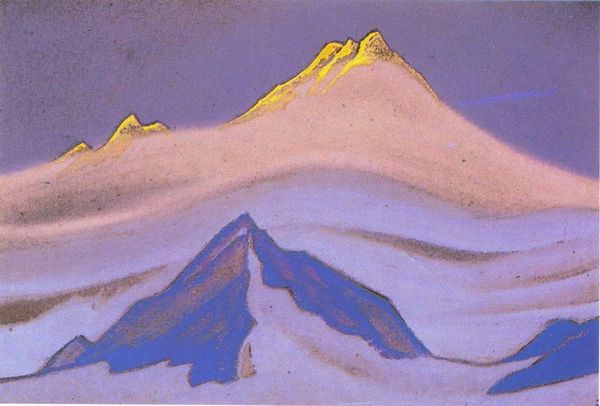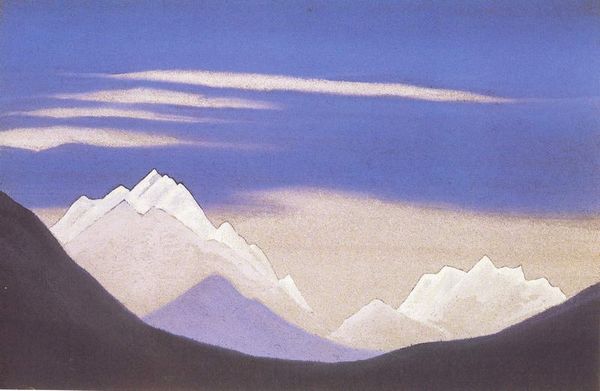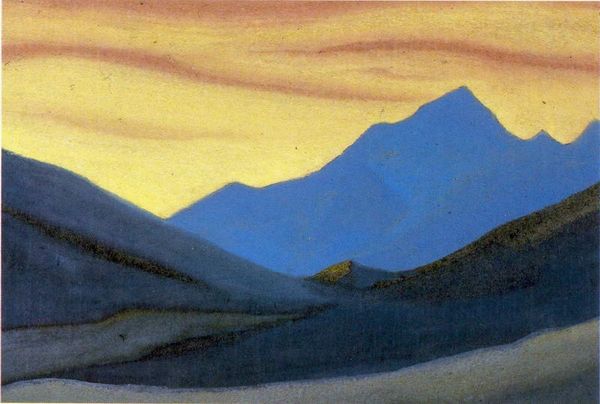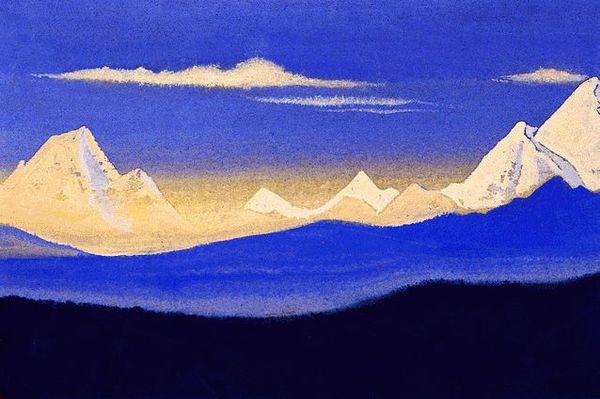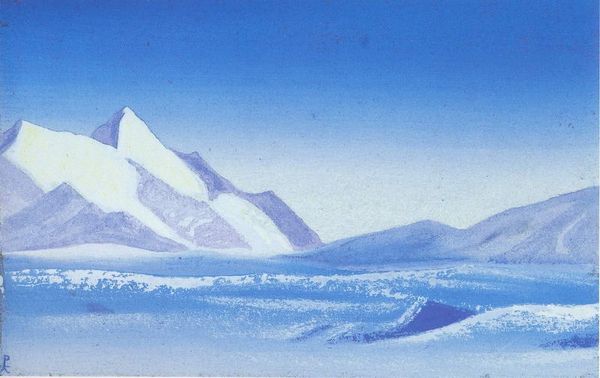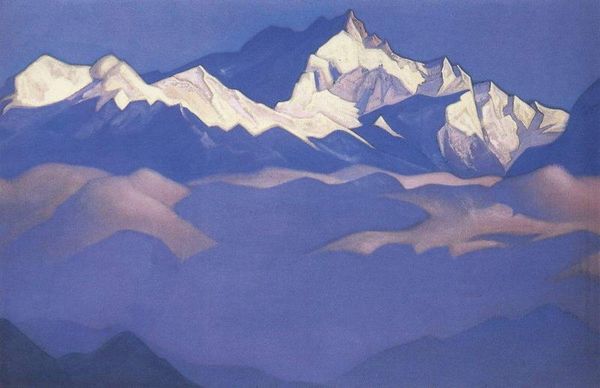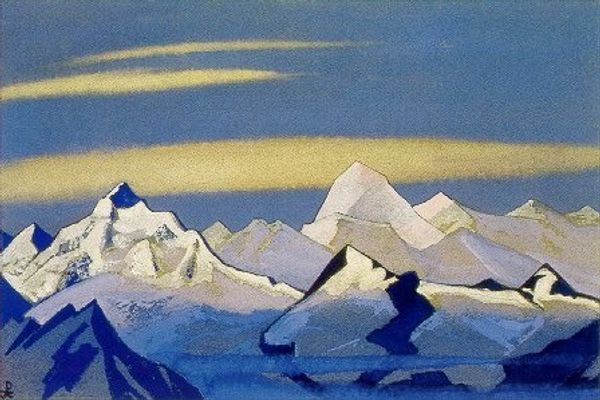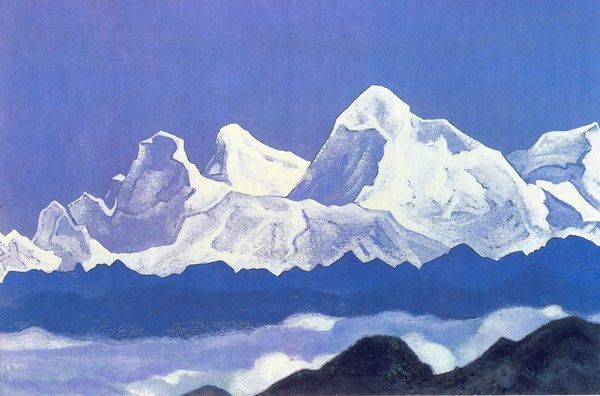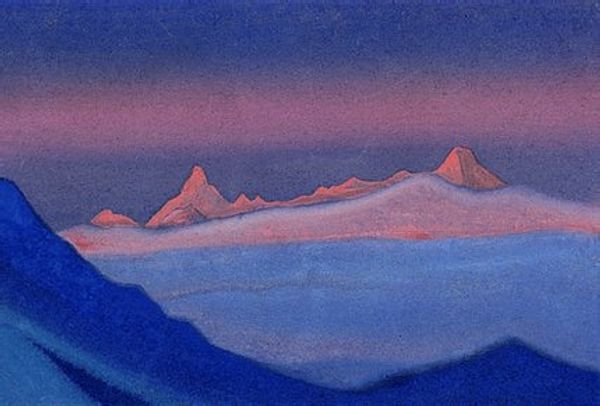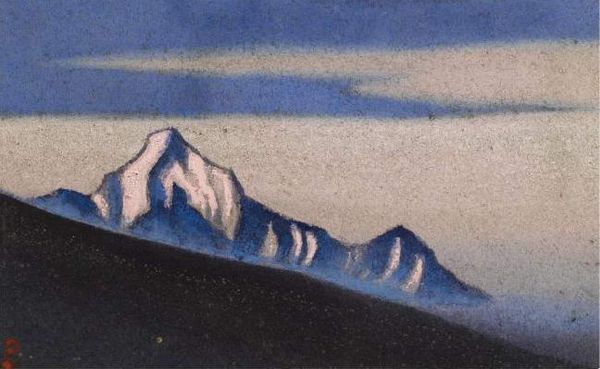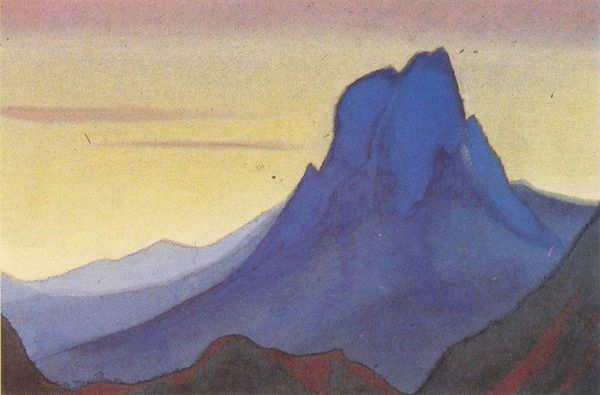
drawing, pastel
#
drawing
#
landscape
#
oil painting
#
romanticism
#
mountain
#
pastel chalk drawing
#
pastel
#
modernism
Copyright: Public domain
Curator: Here we have a pastel drawing titled "Himalayas," attributed to Nicholas Roerich. Editor: It’s incredibly serene. The layering of the pastel creates a dreamy, almost ethereal quality. The colors—the blues and whites—are both cooling and calming. Curator: Roerich was deeply involved with the spiritual and philosophical movements of his time, specifically Theosophy. This series of Himalayan paintings, though undated, reflect his quest for spiritual understanding. He saw the mountains as a connection between the earthly and the divine. Editor: Interesting. The simplification of form definitely supports a reading into its symbolic potential. Take the mountain peaks – they are reduced to near geometric forms that emphasize verticality, drawing the eye upward. The horizontality of the plains below grounds the composition. Curator: Precisely. And Roerich's own cultural background as a Russian intellectual undoubtedly shaped his engagement with Eastern spirituality. These paintings were not merely landscapes; they were attempts to visualize and convey profound spiritual experiences accessible to a Western audience steeped in orientalism. It becomes important to understand this fascination as inherently problematic. Editor: The medium, pastel, adds a softness, further diminishing any harshness. Note how the color palette, though limited, utilizes subtle gradations of tone to indicate depth and distance. Semiotically, this reinforces the artwork as being dreamlike and abstracted, and perhaps less grounded in material reality. Curator: The fact that this hangs in the Roerich Museum in Moscow is also important, right? This work serves as an artistic meeting point between Russia's cultural heritage, Roerich’s spiritual beliefs, and colonial power dynamics relating to the East. These images were instrumental in solidifying a romantic and potentially problematic vision of the East for Westerners. Editor: I agree. Viewing it primarily through formal lenses offers one appreciation, but ignoring its complicated cultural footprint does an injustice to our viewing experience. Curator: Yes, this single pastel chalk drawing embodies so much about the complex intertwining of art, identity, spirituality, and political discourse. Editor: I leave this work contemplating form and ideology, and its lasting effect.
Comments
No comments
Be the first to comment and join the conversation on the ultimate creative platform.
